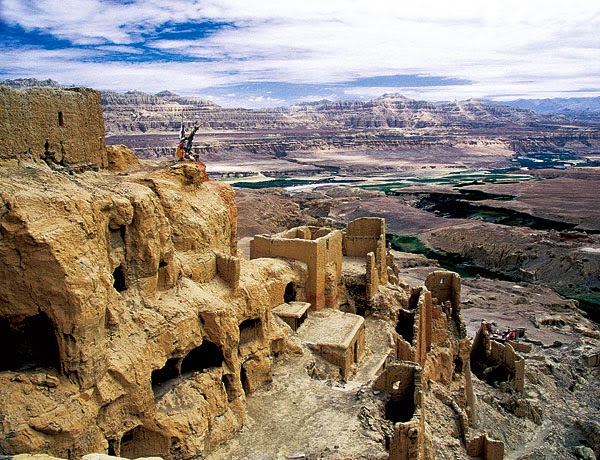1st Month -
1st-7th: New Year Festival Losar - A week long drama and carnivals, horse races and archery
4th-25th: Monlam Prayer Festival- The Great Prayer Festival, a tradition begun by Tsong Khapa. Manypilgrims gather at Jokhang in Lhasa
15th: Lantern Festival - Commemorates Buddha's miracle at Sravasti. Fires are lit on roofs, and lamps in windows
28th-29th: Festival to drive out evil spirits and expel scapegoat. Lamas encircle Lhasa with trumpets
Tibetan Pilgrim
4th Month
7th: Pilgrim Festival - mportant month for pilgrims. -the birth of Buddha Sakyamuni
Saka dawa
15th: Saka dawa - Celebrates the birth and Enlightenment of Sakyamuni and his entry toNirvana. An outdoor opera is held and captured animals released. Worshippers flock to the Jokhang in Lhasa to pray.
5th Month
14th-16th: Hanging of the Thangka - A giant thangka is hung at Tashilhunpo in Shigatse
15th: Incense Festival - On this day ghosts are said to prowl. Tibetans dress up and party to drive away the spirits.
15th-24th: Sho Dun Festival - Literally, the "Yoghurt Festival." Worship of the Buddha. Picnics and operas are held in parks particularly under the trees at Norbulingka. There are often bonfires at night.
6th Month
4th: Buddha's sermon - A feast is held to commemorate Buddha's first sermon. Pilgrims climb holy mountains such as Chokbori
6th: Cham-ngyon-wa, or "Old Dance" - Celebrated at the Cho-ne Monastery, representing the souls of the departed.
Beginningm : Washing Festival - Lasts about a week. People go to the river to wash themselves and their clothes. Said to cure any sickness.
End: Ongkar Festival - Literally 'Looking around the fields'. Ensures a good harvest. Horse-racing, archery contests and opera
7th/8th Month
All: Golden Star Festival-The Golden Star festival is held to wash away passion, greed andjealousy and to abandon ego. Ritual bathing in rivers takes place and picnics are held
Yak Racing
8th Month1st-10th: Dajyur Festival - The Dayjur is held in Gyantse and Damxung -horse racing and light hearted sports competitions and games takes places
1st-7th : Harvest Festival - The festival is held with prayers, dancing, singing and drinking
9th Month
22nd: Buddha's descent from heaven after preaching to his mother is commemorated. All monasteries are opened and pilgrims gather
10th Month
25th: Tsong Khapamemorial- Memorial festival of Tsong Khapa's death - fires are lit on the roofs of the monasteries and lamps are lit
Dress up for New Year
12th Month 1st-7th: New Year Festival -New Year Festival in Shigatse
5th-6th: Meeting of the Eight Guardians- The Meeting of the Eight Guardians and demons where Tibetans stay indoors to avoid evil outside
Devil Dance
29th: Banishing Evil Spirits - A "Devil Dance" is held to drive out all evil from the Old Year to prepare for New Year.



































